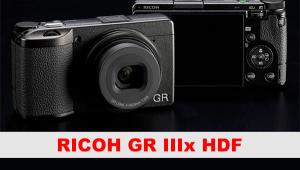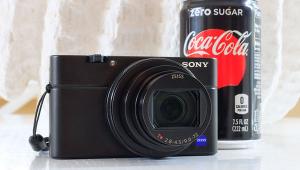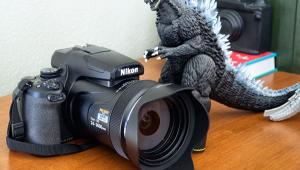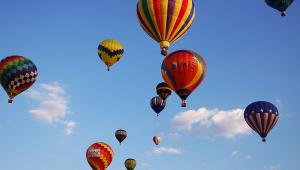High-Resolution Digicams; Do Major Megapixel Counts Aid Or Hinder Image Quality? Page 3
The ISO 100 Face-Off
At ISO 100, the D-SLR images are cleaner without any visible "graininess" or any smudging of fine detail caused by in camera processing. Hence, the images actually exhibit higher resolution than photos made with the digicams, particularly one model. Under high magnification, some JPEG artifacts are also visible in the digicam images. That's understandable, since they employ a greater compression ratio to generate smaller files. Even so, my best ISO 100 images from all cameras made for technically superb letter-size prints after they were optimized for printing in Photoshop.
In 12x16" glossies--made at 260dpi with an Epson inkjet printer--the higher quality produced by the D-SLRs at ISO 100 is visible especially under close scrutiny. Because the data is cleaner, the D-SLR files can be enlarged ("ressed up") to a greater degree in Photoshop without a significant loss of quality, making the images more suitable for oversized prints. Even so, one of the digicams generated JPEGs that made very nice 11x15" prints after some adjustment in Photoshop; they look great when viewed from a typical 4- or 5-foot distance.
ISO 400 And Above
By ISO 400, the D-SLRs have the edge over the digicams, with clean, smooth images that do not appear over-processed or grainy; my 11x15" prints are still close to superb. Actual resolution in the digicams' images is obviously lower, because the smaller cameras' processors applied a higher level of NR processing that smudged a lot of fine detail. Still, after applying Unsharp Mask in Photoshop (using some expertise as to Amount, Radius, and Threshold for each image) the JPEGs from both 12MP cameras made for nice letter-size glossies.
 |
|
 |
|
|
At ISO 800, and particularly at ISO 1250 or 1600, the difference was obvious, making the D-SLRs a much better choice at high ISOs. Again, the digicams differed in the extent of NR processing. One produced an artificially smooth effect with a major loss of texture while the other provided more grainy images, with slightly better resolution of fine detail. The benefit of a cleaner D-SLR image was noticeable even in 4x6" prints and obvious in 8x10" glossies.
The Raw Advantage & Dynamic Range
Both D-SLRs provide an option for raw capture, while the compact cameras I used record only JPEGs. (A few 12MP digicams will provide a Raw Capture mode.) As with any camera, the raw images are slightly better than JPEGs. As well, the NR features in certain raw converter programs can be remarkably useful for optimizing the quality of high ISO photos.
 |
|
|
Without high-tech equipment, it's impossible to calculate dynamic range. An evaluation of this aspect was complicated by the fact that each camera produced a different level of contrast at default settings. (One of the digicams included a feature to boost dynamic range by slightly increasing shadow detail; for the sake of consistency, I set that to Off.) Both D-SLRs produced moderately high contrast for a snappy effect and an acceptable level of highlight and shadow detail, even at high noon light on sunny days. The two digicams differed significantly at default, producing very high vs. slightly low contrast, respectively. Of course, most of the better digicams and D-SLRs offer in camera adjustment for contrast; a low level can be useful in harsh lighting to reduce the loss of detail in both dark and bright areas.
 |
|
|
A long-time "Shutterbug" contributor, stock photographer Peter K. Burian (www.peterkburian.com) is the author of "Mastering Digital Photography and Imaging" and the co-author of several "Magic Lantern Guide" books about 35mm and D-SLRs. He also teaches two online digital photography courses at BetterPhoto.com.
- Log in or register to post comments

















































